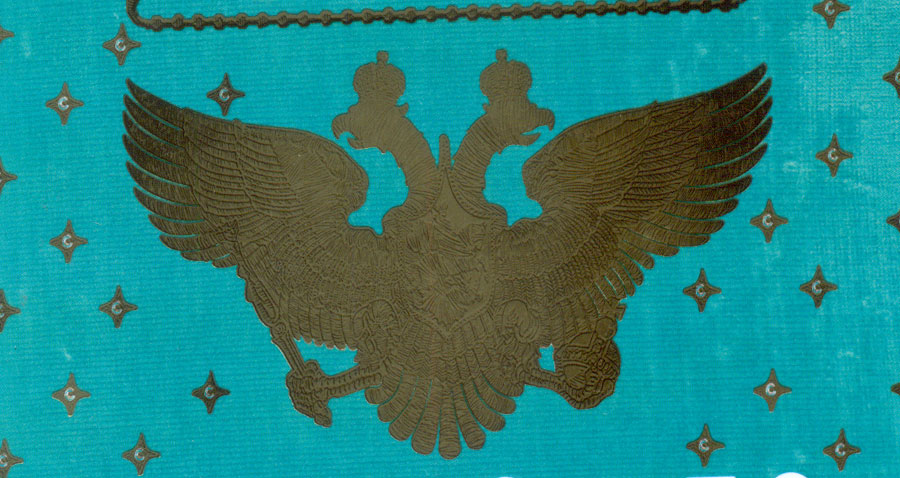The Romanovs: 1613-1918
By Simon Sebag Montefiore
Weidenfeld & Nicolson
January 2016
Hardback: 768 pages
ISBN: 0297852663
The Romanov dynasty which ruled Russia from 1613 until 1918 provides a colourful and compelling narrative, of which the biographer of Potemkin and Stalin, Simon Sebag Montefiore, has taken full advantage. Russia and her autocratic rulers have always been larger than life. The empire itself grew by 20,000 square miles a year from 1613 until, by the late 19th century, the tsars (the word is derived from “Caesar”) ruled one-sixth of the globe. Were the twenty sovereigns of the dynasty capable of ruling an empire this size? Hardly.
The author has conceived his book as a study in character: the “distorting effect of absolute power on personality”. It certainly provides a fascinating psychological study of this succession of megalomaniacs, madmen and mediocrities. It was Alexei, son of the first tsar, Michael, who agreed to an alliance with his nobles, which meant they were free to rule over their own vast estates and dispense justice – often vicious and cruel – to their serfs, in return for their loyalty. This alliance lasted until 1861, when Alexander II emancipated the 22 million serfs. Nonetheless, the core of the great Russian families with their illustrious names, such as the Sheremetevs, Dolgorukys, Golitsyns, Trubetskoys and Orlovs, carried on flaunting their wealth and power until the Revolution.
There was a constant tension, as the author describes, between the need for Russia to maintain its vast borders, while at the same time projecting a power proportionate to its imperial pretensions within a backward society which, unlike the rest of Europe, did not develop functioning democratic assemblies and civic institutions. By the nineteenth century, the country had a vast bureaucracy of petty functionaries with symbolic power, alongside a largely irresponsible aristocratic class and a royal family imprisoned by protocol and semi-mystical status.
The tsars had a fourfold function: as religious leaders, imperial heads of state, as a focus of nationalist pride and as military warlords. If they often seemed paranoid it was because their survival depended on constant vigilance, backed by violence. Six of the last twelve tsars were murdered and there were five assassination attempts on the life of Alexander II, 1855-1881, before he was finally killed. When the ill-fated Nicholas II and his family once visited Queen Victoria at Cowes on the Isle of Wight, he did not dare leave the security of his yacht, prompting pity from his English relations.
Nicholas II, who came to power at a time of increasing civic turbulence and demand for reform, was a weak and indecisive figure who commented on his sudden accession in 1894, “I’m not ready to be tsar. I never wanted to become one. I’ve no idea of even how to talk to the ministers.” His ancestress, the empress Anna, 1730-40, is described by the author as “lazy, vicious and weak, distracted by hunting, spying and dwarf-baiting”. Peter the Great had his son and heir tortured to death and Catherine the Great was complicit in the murder of her husband, Peter II. Nicholas I, 1825-55, who created the peculiarly – and enduring – Russian institution of the secret police, lived in “Olympian isolation”. A lady-in-waiting remarked on his “arrogant and cruel expression”.
Sebag Montefiore reminds us in his afterword, where he reflects on the style of Putin’s government, that there is “nothing incompatible about modernity and authoritarianism”. He writes with knowledge and gusto, though in my view he is too keen to highlight and dwell on the salacious details concerning the private lives of this dysfunctional dynasty. He also has a pretentious way of turning the different reigns into a series of theatrical performances rather than chapters, each with its own cast of characters, which makes their outrageous or flamboyant behaviour seem even more frivolous and fantastical than it actually was.
The violence of the Bolsheviks, led by Lenin, Stalin and Trotsky, who imposed the Soviet state which succeeded these corrupt and backward autocrats in 1917, was repugnant and resulted in more decades of misery for the peasants, now turned into the proletariat. Yet after reading this book readers will have some understanding of Trotsky’s description of the Romanov dynasty as “a world of icons and cockroaches”.
This article is reprinted from MercatorNet.com.
About the Author: Francis Phillips
Francis Phillips writes from Buckinghamshire in the UK.

